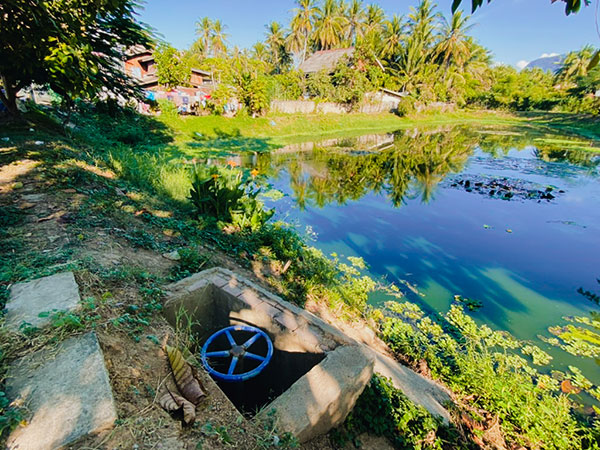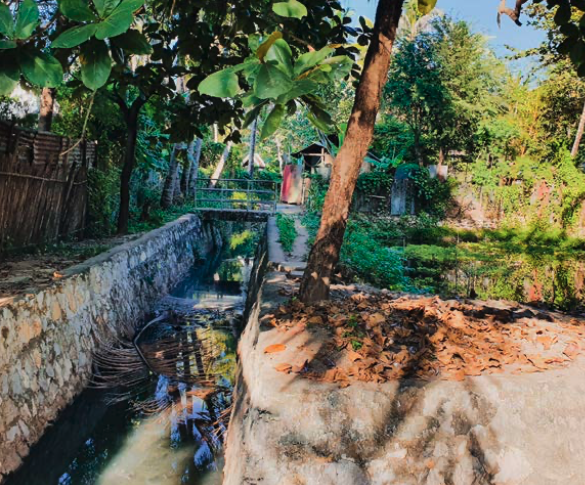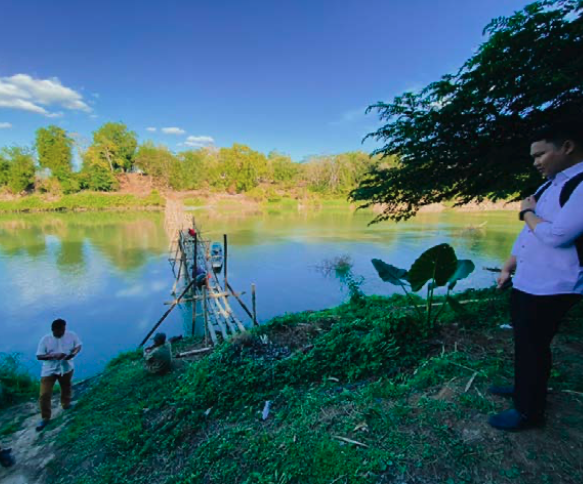Heritage Ponds with connecting gate in the old city of Luang Prabang
Canals in Luang Prabang
The Nam Khan River, at the confluence with the Mekong in Luang Prabang
The vision of this case study is using nature-based solutions (NbS) to retain productive and healthy wetland pond systems in Luang Prabang's heritage precinct.
The site for this case study is located within the catchment of the Mekong and Nam Khan rivers, on the Luang Prabang peninsula that forms the old city centre and its outskirts. Luang Prabang is Lao PDR’s foremost World Heritage city, reflecting significant cultural and religious importance, as well as the architectural importance of colonial-era buildings. The city fuses Lao urban and Buddhist architecture with European colonial government and administration structures. The city’s extensive tourism industry – attracted by its World Heritage status – supports many local businesses – shops, restaurants and hotels. It is also attracting significant investment to the area.
Ban Mano (or Mano Village) is located within the old city’s heritage zone. The Ban Mano wetland ponds are a significant feature of the area, and play important social and economic roles (e.g. for food and income) for some households, particularly women, children and the elderly. Their importance is amplified by other changes affecting Luang Prabang and livelihood practices. For example, encroaching development and upstream dams have disrupted traditions and use of rivers, making the wetland ponds and private land resources more important.
The ponds are also important environmentally, providing some water treatment functions within urban drainage. However, the wetlands and ponds are under pressure – many are filled with silt, are regularly choked with the invasive hyacinth weed, and receive harmful discharges from houses, businesses, roads and surrounding urban areas (greywater and blackwater). Some are drying out, reflecting reduced water inflows or sandy soils that do not retain water, while others have been infilled and built on.
The RUCaS team is collaborating with French non-government organisation GRET and the local wetland committees and authorities to assess options to improve the ponds and waterways adding green hybrid infrastructure that delivers multiple benefits.
The case study considers 2 scenarios:
- the current conventional approach that uses septic tanks to manage greywater and blackwater inflows into ponds
- a hybrid option that incorporates NbS to rejuvenate ponds so that they are agriculturally productive, cleaner and work as a healthy system, and provide public amenity accessible to all by incorporating universal design principles.
The CRCWSC has produced research, guidelines and
tools related to the following topics:
Integrated Urban Flood
Management
Climate change
mitigation
Community
engagement
Economics and
business case



